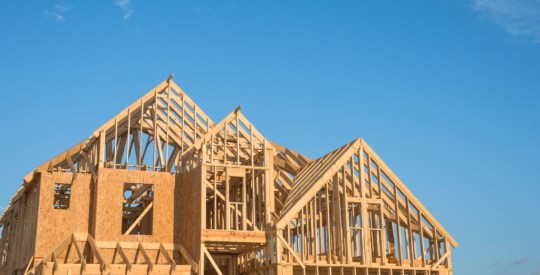New home sales decreased 2.9 percent from October to November, coming in at approximately 407,000 units, according to data released Tuesday by the U.S. Census Bureau. The largest concentration of home sales occurred in the South, where 210,000 units were sold. Only 40,000 units were sold in the Northeast. Unsold inventory came in at 374,000 units in November, down 7 percent from the previous month and down 25.5 percent from November 2007. This represents 11.5 months’ unsold supply, up from the 9.5 months’ supply recorded in November 2007. Nearly half — 49 percent — of new home sales recorded in November were sold for between $150,000 and $299,999, according to the Census Bureau’s data. Existing-home sales also weakened as a result of the continued eroding of the economy economy, according to data released Tuesday by the National Association of Realtors. Existing-home sales, including single-family, townhomes, condominiums and co-ops, fell to a seasonally adjusted annual rate of 4.49 million units in November — down 8.6 percent from the 4.91 million units sold in October — and down 10.6 percent from the 5.02 million-unit pace set in November 2007. Lawrence Yun, NAR chief economist, expected a decline. “The quickly deteriorating conditions in the job market, stock market, and consumer confidence in October and November have knocked down home sales to another level,” he said. “We hope the home sales impact from the stock market crash turns out to be short-lived, as was the case in 1987 and 2001.” Total unsold inventory at the end of November rose 0.1 percent to 4.2 million existing homes, representing 11.2 months’ supply, up from the 10.3 months’ supply recorded at the end of October. Despite otherwise bleak sales, the NAR reported “a solid trend of rising activity” in the California, Nevada, Arizona and Florida markets. “Sales are rising only in areas with large numbers of distressed properties as bargain hunters take advantage of discounted home prices,” Yun said. The national median existing-home price for all housing types — largely affected by distressed sales at discounted prices — was $181,300 in November, down 13.2 percent from November 2007 when the median was $208,800. Regionally, existing-home sales dropped 12 percent to an annual pace of 730,000 in the Northeast; they fell 7.4 percent to a pace of 1 million in the Midwest. In the South, existing-home sales dropped 10.9 percent to an annual pace of 1.64 million in November, while existing-home sales in the West declined 4.3 percent to an annual rate of 1.12 million. Will lower rates spark higher sales? According to Freddie Mac (FRE), the national average commitment rate for a 30-year, fixed-rate mortgage fell to 6.09 percent in November from 6.20 percent in October; the rate was 6.21 percent in November 2007. Last week, Freddie reported the 30-year rate fell to 5.19 percent — the lowest on record since the series began in 1971. Talk began circulating weeks ago that the U.S. Treasury Department would soon take measures to lower mortgage rates even more. But Treasury secretary Henry Paulson came forward last week denying claims that he had been in discussions about finalizing a plan to subsidize 4.5 percent mortgage rates through government-sponsored entities Fannie Mae (FNM) and Freddie Mac. Interesting to note is Paulson would not dispute or acknowledge the rumors until after the Federal Reserve lowered its federal funds rate — the rate banks charge each other to borrow money — to a range of zero to 0.25 percent, making money cheaper than it’s ever been. The Fed’s action alone won’t stimulate the housing market and ease the burden on the average borrower, said NAR President Charles McMillan, a broker with Coldwell Banker Residential Brokerage in Dallas-Fort Worth, who argues it’s crucial to enact sufficient housing stimulus to spark an economic recovery. “We need more than low interest rates to encourage enough buyers to enter the market and meaningfully draw down inventory, which would stabilize home prices –- that, in turn, would help the economy to recover,” he said. A housing stimulus package — if enacted quickly — might do the work that the federal funds rate cut can’t, according to Yun. But not enacted quick enough, the lack of housing stimulus could have far-reaching consequences, he said. “Falling home prices would lead to faster contraction in consumer spending and further deterioration in bank balance sheets,” he said. “More importantly, falling home values would lead to higher loan defaults, including those recently modified distressed mortgages.” “It is, therefore, imperative to provide incentives for homebuyers to get back into the market. It also depends on how effectively Congress and the new administration can help facilitate the short sales process and unclog the mortgage pipeline –- impediments remain for some buyers with good credit.” Visit www.census.gov and www.realtor.org for further details. Write to Diana Golobay at [email protected]. Disclosure: The author held no relevant investment positions when this story was published. Indirect holdings may exist via mutual fund investments. HW reporters and writers follow a strict disclosure policy, the first in the mortgage trade.
Most Popular Articles
Latest Articles
Demand stalled in March for new-home purchases: MBA
Mortgage applications for new homes stalled in March as buyers felt the brunt of sustained home price growth.



